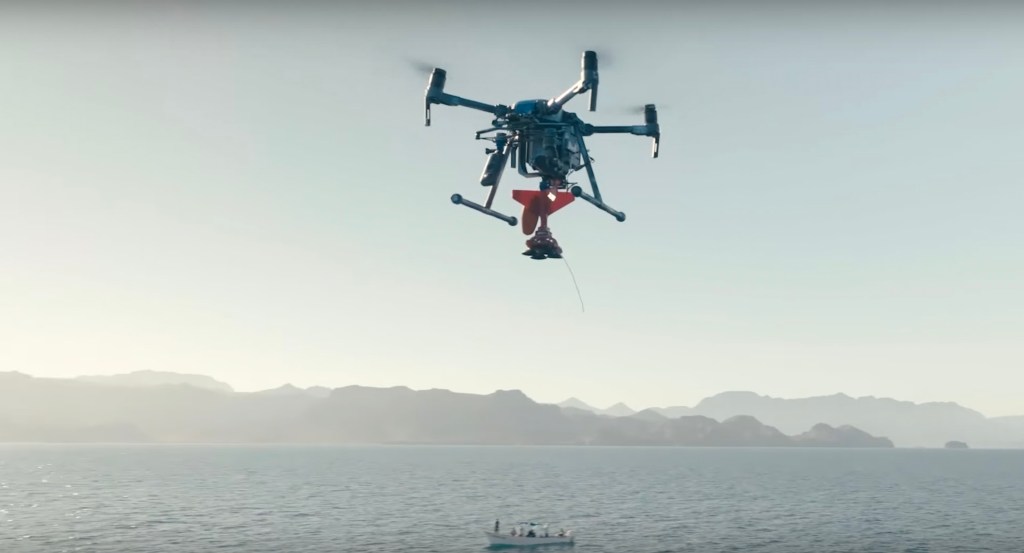
Marine biology researchers have for several years used drones for periodical collection of data to evaluate the health of whales, but now they’ve developed a way to pilot a DJI M210 to gently and discreetly attach electronic tags to monitor the creatures for extended periods.
That effort was detailed in a recent DJI Enterprise blog piece on marine conservation group Ocean Alliance’s partnership with the National Oceanic and Atmospheric Administration (NOAA) to enhance their method of flying DJI Inspire drones for gathering health data on whales, and be able to use it for the tougher task of tagging the creatures for remote observation. By using DJI M210s – and some enhanced delivery innovation – the researchers developed a faster, more efficient, less invasive, and cheaper technique for tagging the majestic sea mammals from on high.
“It’s a game-changer for whales, people, and science,” the NOAA’s David Wiley, who participated in the project, said in the DJI Enterprise report. “In the 25 years I’ve been tagging whales, we have always dreamed of being able to place tags on animals from the air. The real-time aerial perspective allows whales to be followed underwater and researchers to be in position when they surface to quickly attach tags to them.”
The major challenge to researchers in monitoring whales has long been getting into position to collect data or attach tags when the creatures – which spend over 80% of their time under water – finally surface to breathe. Back in 2015, Ocean Alliance began using a Petri dish-dangling DJI Inspire to overfly rising whales and collect spouted water. Biological matter in that liquid caught by that so-called “Snotbot” was then analyzed to evaluate the mammal’s general health, and find any signs common to all samples attributable to pollution, climate change, or other deteriorating environmental factors.
The new Ocean Alliance method using DJI M210 drones is similar in approach. A team aboard a boat positions the drone above a whale they’ve spotted in the area, and when its back is exposed above the water line the pilot releases an electronic surveillance tag designed to accurately drop down and affix itself with four suction cups on the underside.
The method is harmless, painless, and almost imperceptible to the whales. It also eliminates the previously laborious, time-consuming, and stressful process of several boats chasing the creatures until they can get close enough to manually plant tags using long poles. It similarly ensures more reliable placement of monitoring devices on whales – transmitting data on their hunting patterns, kinetics, acoustics, and social interactions – which after a few hours automatically detaches itself and is picked up by researchers for reuse.

Initial testing of the method back in February of 2021 resulted in high success rates – fully 100% on certain species of whales – at distances of up to 500 meters from the nearest boat (try reaching that far with a pole).
Lessons learned in those trials led to the creation of 3D-printed stabilizers that are snapped on to the tags to keep them in upright position as they descend toward their swiftly moving landing spots. By February of this year, Ocean Alliance was ready to put the new iteration of DJI 210-released tags through the motions, with even greater success.
Another tech asset the method affords, meanwhile, is one most drone pilots use and appreciate: clear video captured throughout the entire mission. Researchers say that aerial footage not only allows them to detect reaction of the whales to drones hovering above and dropping their payloads, but also other subtle movements and accelerations the creatures make during the process that wouldn’t have been visible from trailing boats.
FTC: We use income earning auto affiliate links. More.




Comments